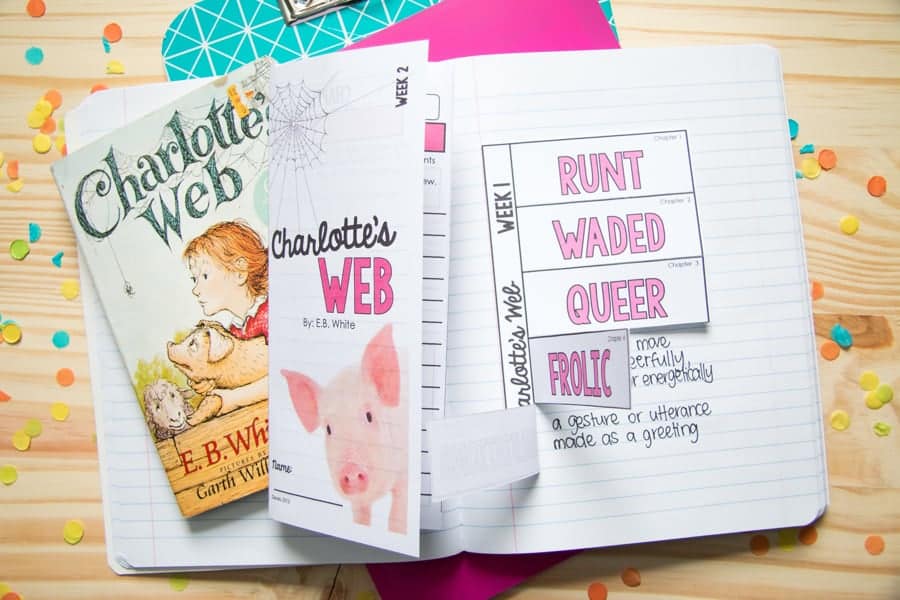The Boxcar Children Novel Study Unit
The Boxcar Children by Gertrude Chandler Warner is such a great book for literature circles or book clubs because it captures the adventurous spirit and creativity of childhood. This no-prep Boxcar Children Novel Study Unit, written as a companion to the first book in the series, engages readers and gets them thinking about the story.
In addition, you can easily differentiate the reading activities in this novel companion. This makes them a great fit for a whole group novel study or for guided practice after a read-aloud.
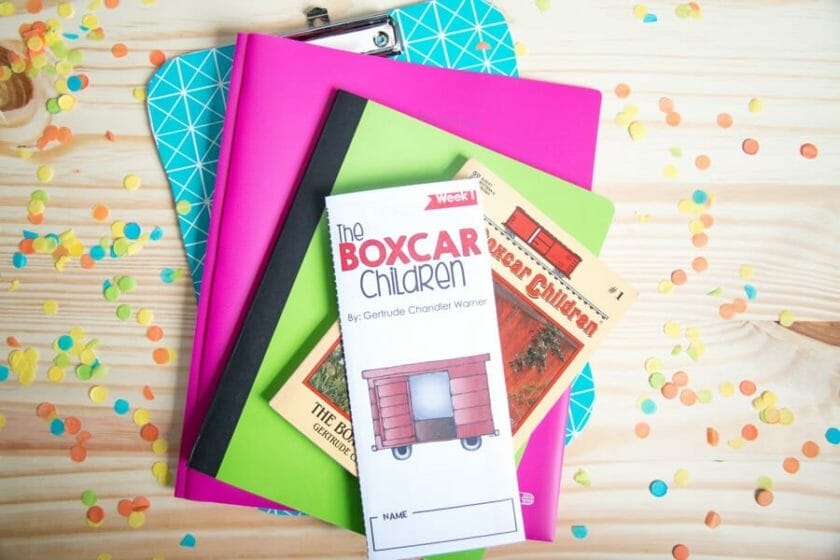
If you need a copy of the book, you can purchase The Boxcar Children on Amazon. (This link is an
However, if you are okay with the ebook version of the story, you can get it for free via the Gutenberg Project here. This site offers the Kindle version of the Boxcar Children – along with several other formats – at no cost.
What reading level is The Boxcar Children?
This book is 160 pages and is a Guided Reading Level O (Lexile 490L). The book is appropriate for third and fourth graders. However, it is high-interest for students in grades 2-5.
What do I get in this novel study unit?
This book companion focuses on reading comprehension activities and vocabulary. It includes three weeks’ worth of lessons and paper-saving printables. Here’s what you’ll find inside:
- Instructional guide with daily comprehension skills, objectives, and key Tier 2 & text-based vocabulary
- Comprehension trifolds (provided in color and black & white)
- Reader’s Notebook Comprehension Prompts (matching trifolds)
- Word of the Day Text-based Vocabulary flipbooks
- Trifold answer keys for easy grading

Reading comprehension skills targeted in this novel study
The
Some of the comprehension skills addressed in this novel study include:
- Main idea
- Problem and solution
- Analyzing character traits
- Cause and effect
- Making inferences
- Summarizing
- Text-dependent writing
- Vocabulary analysis & context clues
- Plot sequencing
- Analysis of setting
Each day’s lesson focuses on a single comprehension skill. First, this allows your learners to dive deep into the skill and lets you ensure your students truly understand and can apply their knowledge to the text.
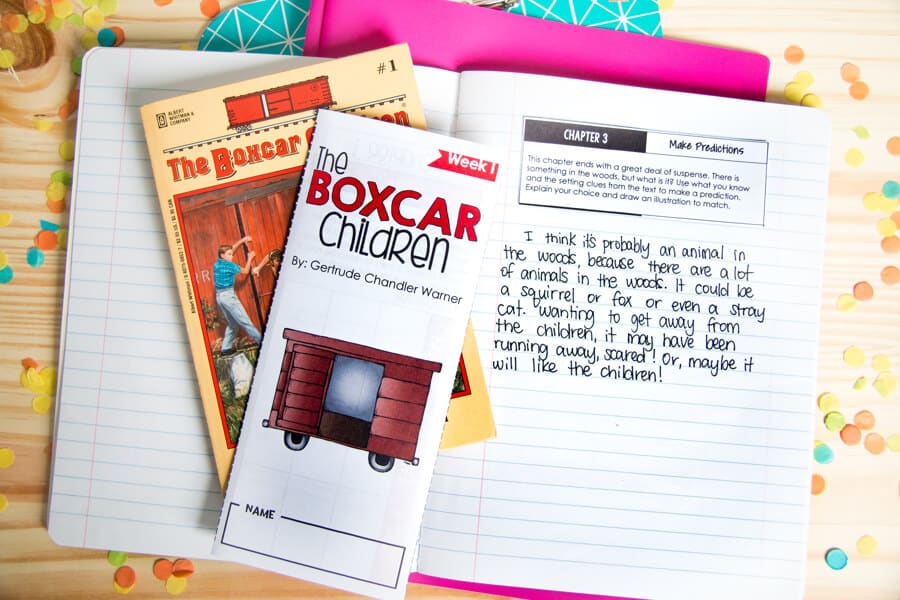
In addition, the comprehension prompts support higher-level thinking. Students must apply their reading comprehension skills to generate a written response and defend their answers with text evidence.
Finally, this literary analysis allows students to dig into the plot and engage with The Boxcar Children, but it also builds comprehension strategies that are applicable to other texts.
How are the reading comprehension activities covered?
The daily comprehension prompts are provided in two formats. In fact, this was done with classrooms in mind. I picked each format to reduce copies needed while still offering materials for student use.
Here’s a little more about each of the formats:
The Boxcar Children Trifolds
The trifold format was the original design for this novel study.
In addition, each foldable was designed to cover a week worth of comprehension using only one piece of paper.
Students are given a targeted question each day that focuses the day’s reading on the daily comprehension skill.

The benefit of the trifold format is that it is extremely approachable to students. Each day also only takes up a third of the page, and this keeps reluctant writers from shutting down.
This also makes it easy to collect and grade. Many students use the trifold as a bookmark, helping prevent missing papers.
Want to know more about the benefits of trifold novel studies? Learn more about the benefits of the trifold novel study format.
Boxcar Children Journal or Notebook Prompts
Advanced students and those who need accommodations for writing love the Reader’s Notebook prompts. They offer flexibility so you can give students more space to write or the opportunity to expand their ideas.
Assign the notebook prompts to advanced readers to push them. You can have students use as many pages as needed to generate a more detailed response to comprehension questions. As a result, this pushes the students to analyze and defend their answers.
However, you can assign the cut & paste prompts to students will dyslexia, dysgraphia, and fine motor issues, too. Glue them onto specialized paper or within a notebook to give students with large handwriting more space to respond.
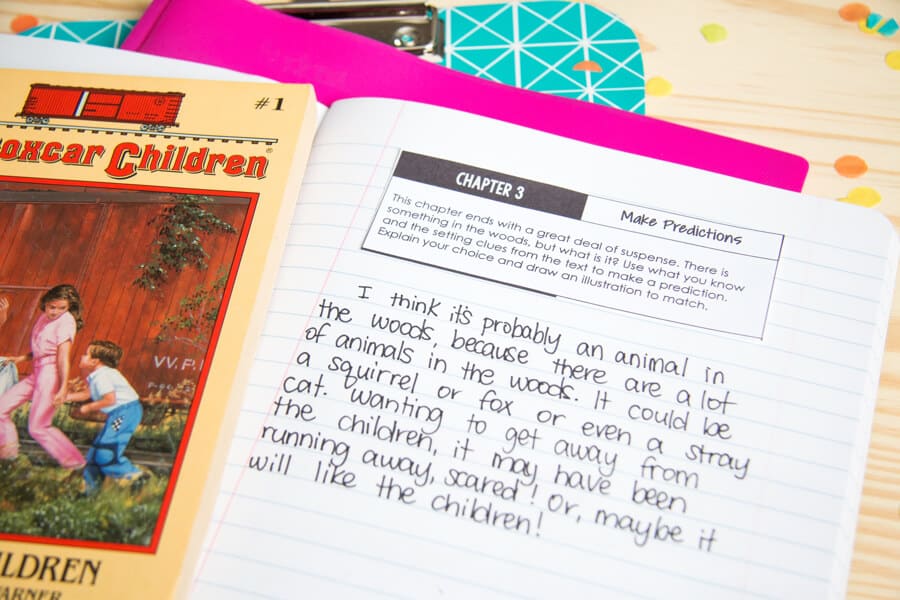
Regardless of the format selected, the prompt is the same so you can easily have some students working on the trifolds while others use the notebook prompts.
What academic vocabulary is included in the novel study?
The instructional guide includes over 50 academic vocabulary words. These include general academic vocabulary and skill-specific vocabulary. In fact, here is a sample of the included terms:
General vocabulary:
- analyze
- evaluate
- interpret
- generate
- diagram
- composition
Skill vocabulary:
- context clue
- main idea
- inference
- sequence
- point of view
- visualize
Why include academic vocabulary?
Tier 2 vocabulary, also known as academic language, is one of the biggest barriers to student success in school.
The research on the impact of academic vocabulary clearly shows we must take the time to explicitly teach these words to our students.
To make it easy, I outline key Tier 2 words for each skill. This allows you to incorporate these words into your novel study discussions.
It also means you can explicitly teach students their meaning if you are working with struggling students or English Language Learners (ELLs).
Many teachers like to pre-teach this vocabulary to help struggling students start the text on equal footing with their peers.
Text-based vocabulary in The Boxcar Children
In addition, each day’s lesson has a text-based vocabulary word that can be found within the assigned chapters.
Some of the text-based vocabulary words included in The Boxcar Children literature guide include:
- admired
- orchard
- delight
- boxcar
- cross
You teach these words using the flipbook format. Designed with conserving copies in mind, this format uses one piece of paper per week.
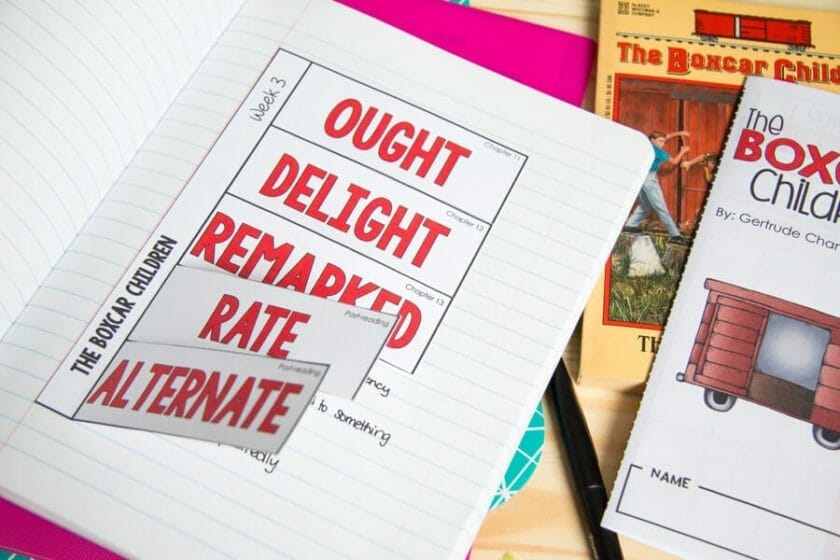
The Word of the Day Flip Book is designed for use in interactive reading journals.
To use the flipbooks, your students cut around the flipbook, cut the tabs, and glue it into their notebook. However, have students leave the tabs unglued so they can be lifted. This allows students to write under them.
Depending on your students, you can have them generate a definition of the day’s word or generate a list of synonyms and antonyms.
You can even have students draw a picture of the meaning.
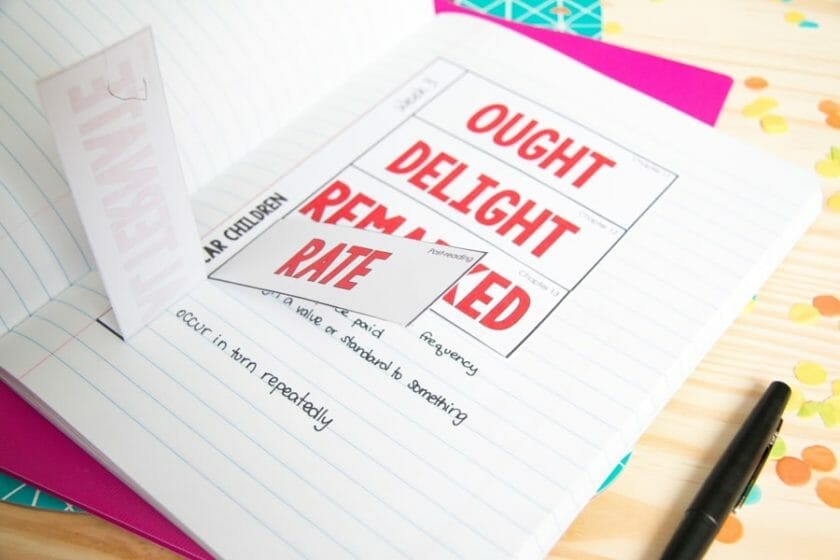
How to purchase this novel study for The Boxcar Children
The Boxcar Children novel study unit can be purchased on Teachers Pay Teachers.
There are currently nearly 200 novel studies available in my store.
If you are looking for another novel and cannot find it. Please feel free to reach out.







